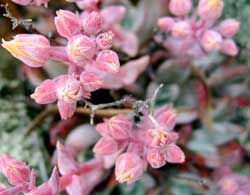 Plants have traditionally been considered “unfeeling and insensate” organisms, but in 1970, an Australian scientist made an astonishing discovery: plants can communicate. For instance, when experiencing drought, they emit a distress signal that can be interpreted as “Thirst! Thirst!”
Plants have traditionally been considered “unfeeling and insensate” organisms, but in 1970, an Australian scientist made an astonishing discovery: plants can communicate. For instance, when experiencing drought, they emit a distress signal that can be interpreted as “Thirst! Thirst!”
However, at that time, the phenomenon could not be explained. Later, science revealed that these sounds originated from the vibrations of water-conducting tubes within the plant’s stem. But are these sounds random, or do plants actively “call out” for help?
Researchers equipped with specialized devices like gas exchange machines and signal receivers aimed to “listen” to the language of plants. They discovered that when plants received adequate light and nutrients, they produced signals. But can these signals truly be considered a form of plant language?
Moving into the 1980s, an American scholar presented evidence suggesting that the signals emitted by plants could indeed be their form of communication. Although the arguments seemed plausible, there wasn’t enough concrete evidence to provide a clear affirmation, prompting many scientists to delve deeper into uncovering the secrets of plant language.
Recently, scientists have developed a device called the “Plant Activity Translator,” capable of detecting the sounds emitted by plants. Through their research, scholars found that plant sounds vary with sunlight. When in darkness and suddenly exposed to bright light, plants produce alarming sounds. In response to wind, storms, or drought, they emit sounds of fear and chaos. Under normal conditions, certain plant species can produce sounds resembling flutes or even human breathing.
Nonetheless, many scientists remain skeptical about the existence of a “plant voice.” Meanwhile, traditional beliefs have long held that “plants also possess a soul.” The answer to this intriguing question remains to be uncovered.


















































